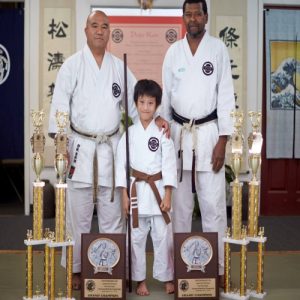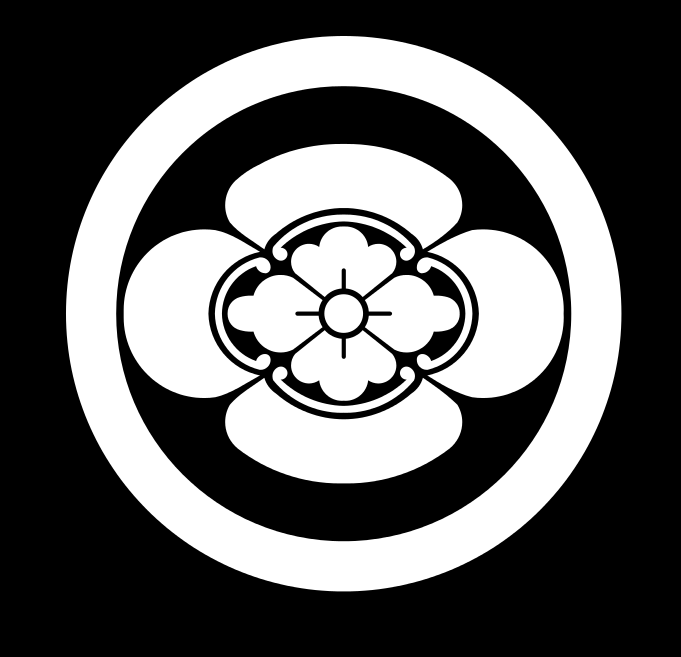Kobudo
We teach Yamanni-Ryu Kobujitsu at Kai Leung’s Shotojuku.
Karate literally means “empty hand” and is the discipline of fighting without weapons. Kobujitsu is the displine of fighting with weapons.
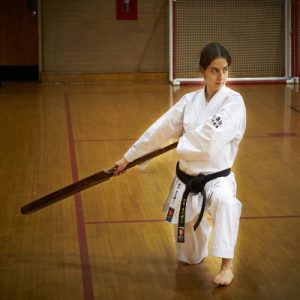
It is obviously much more effective to engage in combat with a weapon than without. Thus the history of weapons oriented fighting disciplines predate those of empty-hand techniques. Karate and related empty-hand disciplines arose out of the need to engage in combat after having lost one’s weapon.
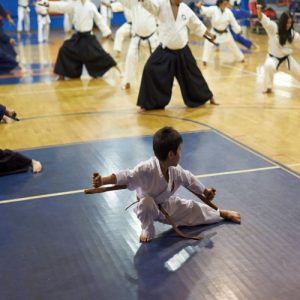 The Yamanni-Ryu discipline of kobujitsu focuses primarily on the bo. Secondary weapons include the sai, tunfa, nunchuku, kama and eku.
The Yamanni-Ryu discipline of kobujitsu focuses primarily on the bo. Secondary weapons include the sai, tunfa, nunchuku, kama and eku.

Kobujitsu and karate are the two facets of fighting techniques.
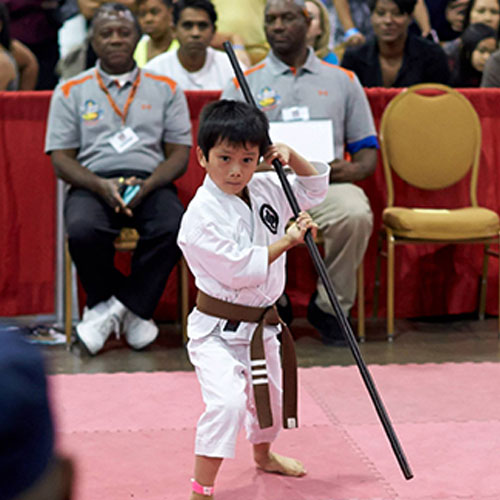


It is difficult to achieve a well rounded understanding of karate without studying kobujitsu and vice versa. Focused practice of kobujutsu reveals an understanding of how to move one’s own body that is not present with karate alone. Furthermore one might consider kobujutsu as a form of training with resistance from a modern sports medicine perspective. Today we use elastic bands and kettle bells in sport karate training to accomplish what previously accomplished by wielding weapons.
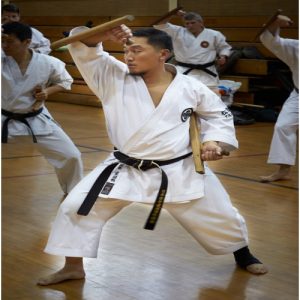
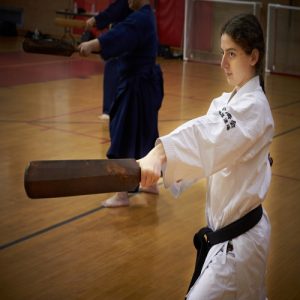
Yamanni-Ryu promotes fluid movement of the body and weapon. Correct execution of Yamanni-Ryu techniques results in beautiful, flowing kata that are exceptionally well suited for exhibition and tournament performance.
Shihan Kai Leung with Sensei Bernard Clemons and student Aidan Lok. Aidan took first place in all four divisions that he competed in (Traditional Forms, Open Forms, Traditional Weapons and Open Weapons). Aidan went on to win the youth underbelt grand championships, beating all of the other 13 years and under division winners (including those with CMX forms) with his performances of the traditional Shotokan empty hand kata Unsu and the traditional Yamanni-Ryu bo kata Sakagawa no kun.
